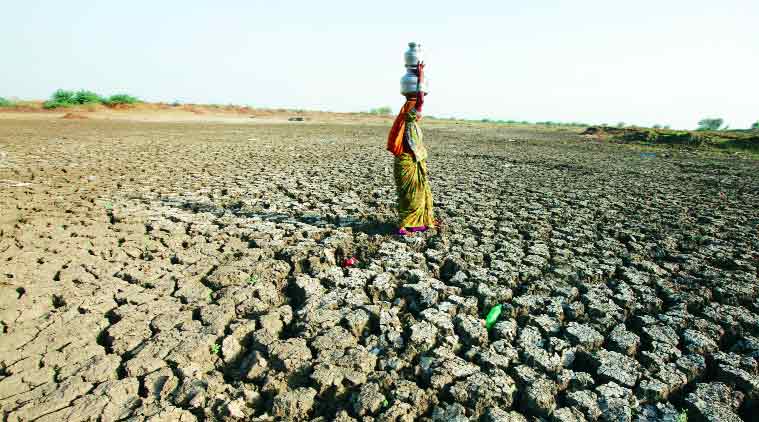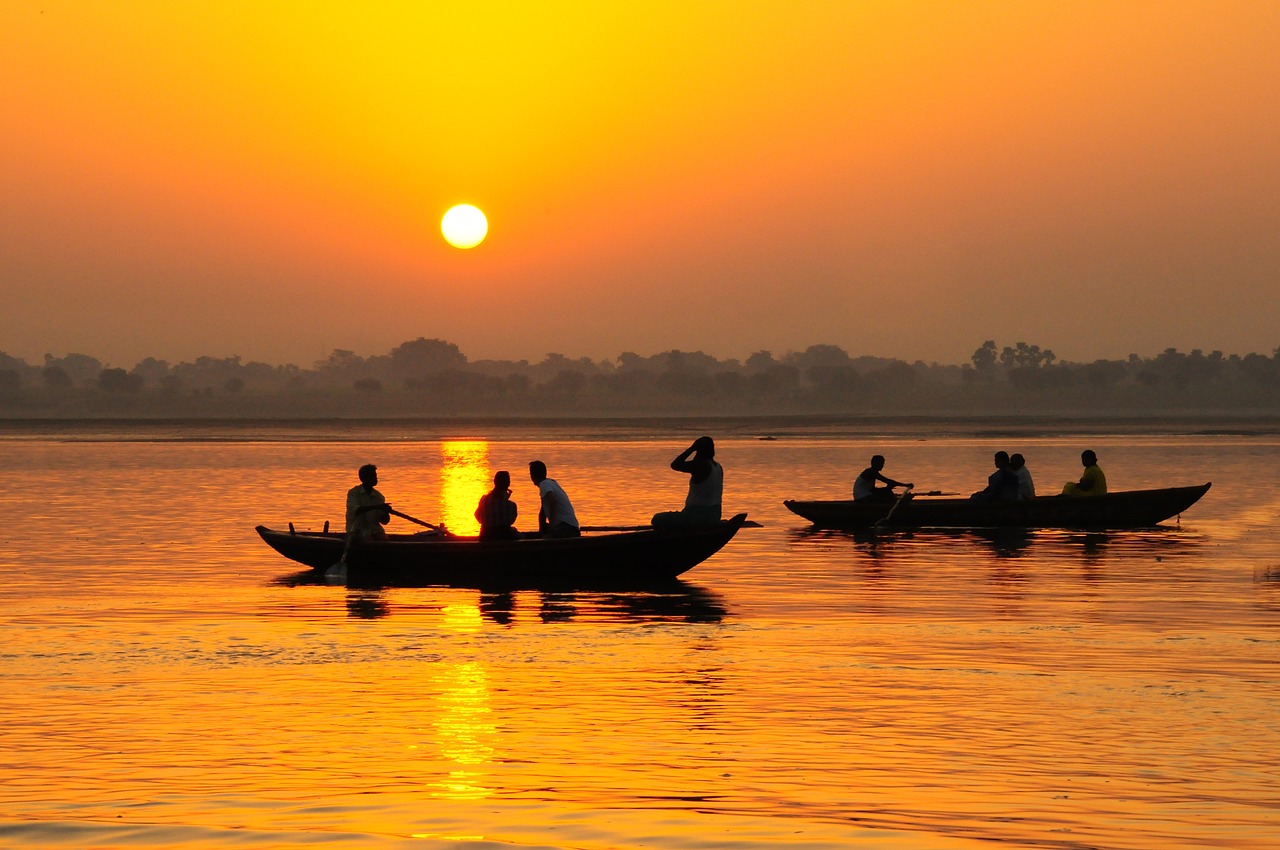The outbreak of violence and the burning of 35 Tamil-owned buses in Bengaluru (also known as Bangalore) earlier this month is just the tip of the iceberg in India’s crippling water crisis. A legal dispute over the Cauvery (Kaveri) River in India’s south has suffered from more than a century of bureaucratic corruption, mismanagement and governmental dithering.

Originating in the Indian state of Karnataka, the Cauvery River flows through Tamil Nadu to the Bay of Bengal, and has been the center of dispute between the three states since British rule in the 19th century. Earlier this month, India’s Supreme Court ruled that Karnataka must release 12,000 cubic feet of water per second to Tamil Nadu until 20 September for irrigation – nearly a quarter of the water available in the Cauvery basin – while drought-hit Karnataka argues that most of the river water is needed for drinking.
In the face of the protests, police have imposed an emergency law that prohibits public gatherings and more than 15,000 officers have been deployed across Bengaluru. Meanwhile, water shortages, mismanagement and contamination throughout India are reaching dangerous levels.
“The unthinkable is happening”
While the Ganges is one of the world’s largest sources of freshwater, this accounts to less than four percent of the world’s available fresh water. The Ganges Basin sustains around 40 percent of India’s population (approximately 500 million people) – but its groundwater is gradually dissipating. A witness to this dissipation said, “The unthinkable is happening.” The situation has worsened with the recent El Nino and compounding effects of climate change.
Social activist Arundhati Roy, best known as author of The God of Small Things, has been vocal about the impacts of inequality, farmers’ suicides and how big dams, while essential for storage, often serve to line the pockets of the rich at the expense of the poor. India’s recent drought, which has turned much of the subcontinent into a dust bowl, has highlighted the damaging effects of inequality; and just how corrupt the system that has allowed the groundwater table to grow toxic to the point of irretrievability.
According to a recent study in The Economist, around 330 million people (a quarter of India’s population) are facing acute water shortages. Even in a good year, New Delhi, which lies in the Ganges basin, gets less than 40 days of rain each year. The situation is worse in other cities, with some cities actively engaged in territory wars over rivers. Over half the country, 65 per cent of which is rural, lives in a state of high water stress with water regularly contaminated by bacteria. Surveyors have divided the country into 5723 geographic blocks, over 1000 of which are considered over-exploited – this means that more water is drawn on average than is replenished by rain – or critical, meaning they are dangerously close to it. 20 years ago, according to the Central Groundwater Board, only 250 blocks fell into these categories.
Reckless overuse
The 14 million residents of New Delhi consume 900 million gallons of fresh water a day. The city supplies nearly 700 million gallons from rivers and reservoirs, but more than a third of it is lost to leaks within the 10,000 kilometre system of dilapidated pipes and pumping stations. More is siphoned off by water mafia, who then sell it to people in slums who are supposed to get it for free.
With temperatures at an all-time high, armed guards are being posted at big dams to prevent desperate farmers from stealing water. Reservoirs are running dry, and the ‘sand mafia’, operating in collusion with local officials, has contributed to the problem by illegally removing sand – necessary for water to percolate into underground aquifers – from riverbeds to supply concrete for India’s construction boom.
“The problem is not lack of water, but its reckless overuse,” said The Economist. “China, with a larger population, uses 28% less water than India.”
Rainfall has been 8.5 percent lower this August than usual. The traditional solution to this problem has been to dig deeper. While this practice offers short-term deliverance to many farmers on the brink, it comes at a price: the depletion of the groundwater table, once sapped, cannot be retrieved. More sustainable solutions to short-term water shortages must be found.

In India, there were two million wells 30 years ago; today there are 23 million. As the population increases, so, too, does the demand for water. Many dig too deep, allowing saltwater and arsenic to creep in, rendering the aquifer useless. In addition, farmers, who are given special rates, often abuse their water allocations, rather than share with those who don’t have the same access. On the same amount of land that Chinese farmers grow 4,000 kilograms of rice each year, Indians grow no more than 1,600, and they use 10 times more water to do so than is necessary.
An extreme case of negligence
“This is a man-made crisis, a policy crisis,” Janakarajan, an officer at the Madras Institute of Development Studies told the New Yorker. “Politicians love to talk about architecture and new buildings. Water bores them. They don’t want to plan for growth, so growth makes its own rules.”
India’s property laws deem the owner of the land the owner of the well. Slum dwellers, who do not officially own land and whose settlements are not recognised as official, are therefore frequently denied access to municipal water pipes. Those that do own wells often sell its water to those without for inflated prices.
Frequent outages and unreliable water delivery lead to poor or small-scale farmers sinking their own wells. A flat electricity tariff for well owners, introduced in 1975, was offset by the effectively unlimited water supply. Farmers adopted inefficient irrigation methods, like flooding, and pumped additional water to sell to poorer neighbors wanting faster delivery without paying state fees. Competition kept costs low.
As El Nino retreats, the monsoon promises some relief. Prime Minister Narendra Modi, however, needs to crack down on corruption and place water at the center of his development agenda. Without infrastructure to quickly capture the rain, most of it will simply run off and evaporate. India, caught between a desire for economic growth and a need for dependable sources of fresh water, is an extreme case of negligence.
What can be done?
Reversing the crisis, says architect and researcher Anthony Acciavatti, who spent almost a decade documenting the expanse of the river Ganges, will require imagination and cooperation between private enterprise, state and local governments, NGOs, architects and planners, but the only sustainable solution is to utilize the existing infrastructure.

“Any strategy that does not look critically at private groundwater use is bound to fail,” said Acciavatti.
Initiatives like the National River Linking Project, endorsed by Prime Minister Narendra Modi, which would redistribute water by joining 37 rivers in a vast canal network, will also likely displace hundreds of thousands of Indians, limit water available to neighboring countries, and do significant ecological damage.
Consequently, proposes Acciavatti, tube-well use should be regulated. Urban well owners must start paying for both water and electricity at market rates, metering should replace flat electricity fees in rural areas, though farmers may continue to pay for electricity alone. The state should also reduce the number of electrical lines and increase the distribution points along them; private companies should be contracted to meter these points and work with village councils to collect fees from private well owners (who may continue to charge neighbors for use). In rural areas, replacing pump subsidies and flat electricity tariffs with significant subsidies for drip irrigation would limit wasteful flood irrigation.
One such precedent has been set by Gram Power, a Rajasthan start-up company, which has, since 2012 sold electricity in bulk to vendors who sell prepaid energy plans to locals, with metering done at consumers’ homes or businesses. Results suggest this has increased energy access and reduced power loss and theft.
Since there is no accurate record of the total number or location of India’s tube wells, mapping them is an urgent priority. New tube wells must be registered, and urban developers and farmers must collaborate with planners to mediate between groundwater extraction and land use.
What can we do?
For travelers to India, awareness of the situation is paramount. This article is a first step but try to find out more about the specific current situation in the areas you will visit. When you’re traveling in India, try to conserve as much water as possible. Some guesthouses, for instance, have a bucket system for showering and visitors are advised to reduce water consumption as much as possible. By setting a good example, locals might also become more aware of the importance of water conservation. As such, you indirectly raise their awareness without paternalizing them.
Some organizations, such as Art of Living, run volunteer river rejuvenation programs in areas like Maharashtra.
You can also support organizations that run water-related projects. Water Literacy, for instance, is trying to transform India into a water-efficient nation by raising awareness on the importance of water conservation. There are also plenty of international NGOs working on water issues, such as Water Aid America or Water Project.org.
Read Ethical Traveler's Reprint Policy.
